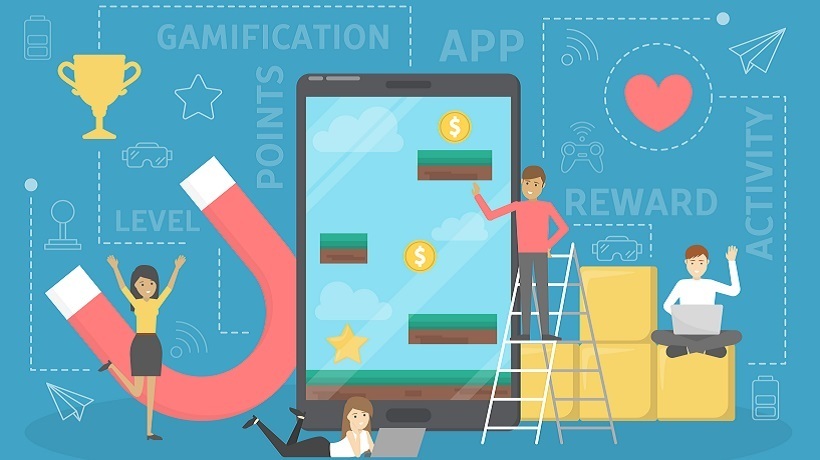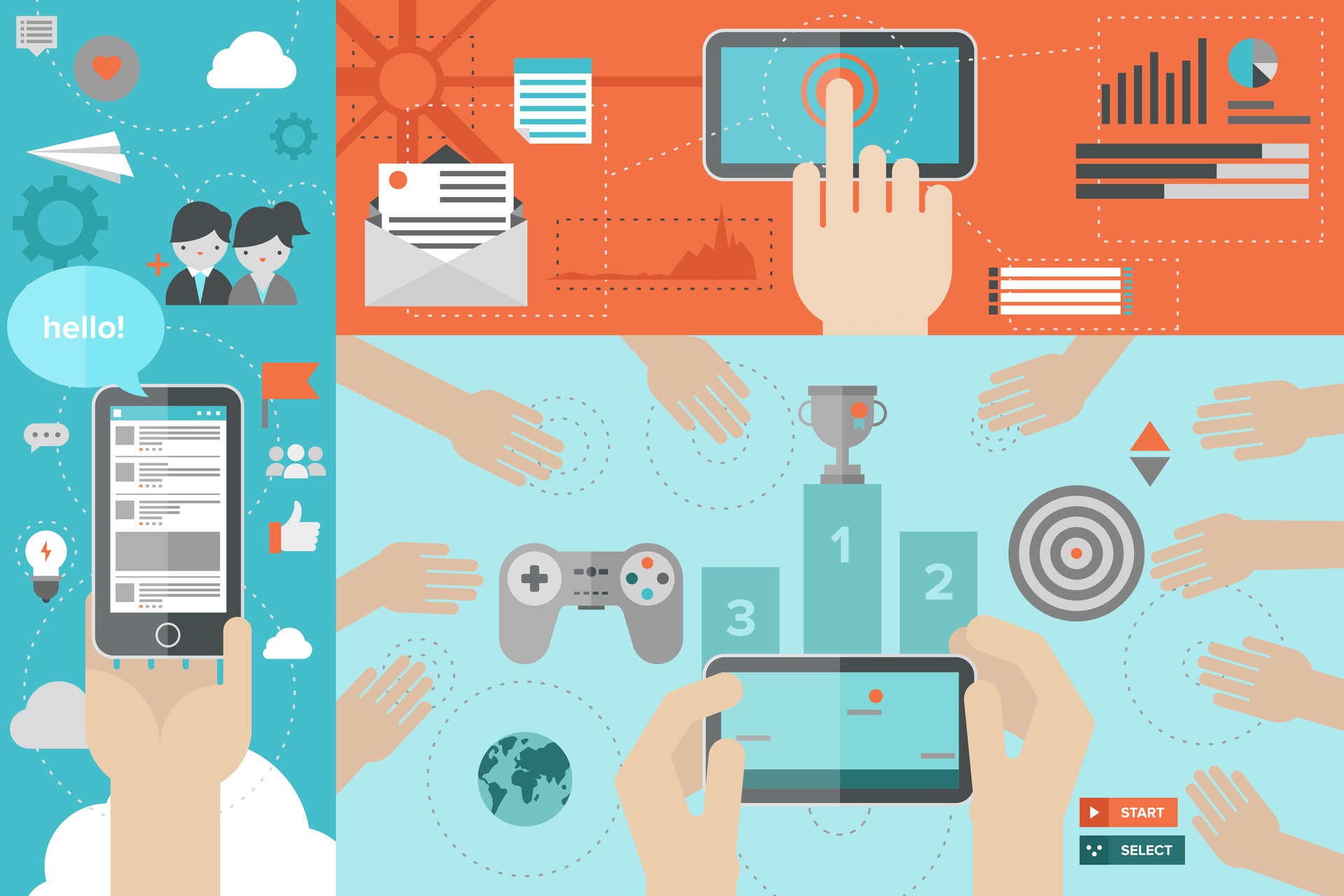Gamified eLearning: 5 Killer Examples
In my last post we took a look at a checklist for designing good gamified eLearning and saw how the story and look and feel that games provide engage learners on a deeper level; competition, rewards and challenges offer motivation, and feedback, both positive and negative, helps learners master information quickly.
In this post, we’ll take a look at some examples I think stand out, where good gamified eLearning demonstrates these guiding principles really well.
So, let’s dive in.
1. First up, Till Training Game, from Elearning Awards gold winner Kineo.
Kineo worked with their client McDonald’s UK on a real game changer in the industry, the McDonald’s UK Till Training Game, which delivered an engaging and memorable learning experience to support the launch of a new till system to 1,300 restaurants, as well as trending for a bit on social media site as learners set up self-styled leader boards to compete against each other.
Some stats:
- £35-£50K budget
- 2 developers
- 20 days tech effort
- 2/3 designers
Here are some of the elements that helps make this gamified approach work:
- Realistic:
The game centers around using a simulation of the new till system so that learners’ ability to take orders is tested, using questions to assess knowledge on how to deliver the best customer experience. The till game is real-time and full on. Learners deal with customer orders, going between customer conversation and till entry, whilst being timed, to practice the till system and reaching customer expectation. - Strong use of stories for context and emotional engagement. The setting is realistic (restaurant), there are characters (customers) and narratives (the orders and the different customers)
- Lots of game mechanics for fun and engagement e.g. lifelines, bonuses and panel elements to enhance the gamification feel. Some of the features included:
- 3 on the bounce: Get 3 correct orders in a row
- Beat the clock: Finish the game with time to spare
- Happy camper: Keeping the customer satisfaction meter high
- Time to spare: Complete the order before the timer runs out
- Dynamic feedback:
Little and often (satisfaction, scores, levels, customer response) - Branching:
Scenarios pose challenges for the learner, and the decisions the learner makes have consequence all the time. There are eLearning authoring tools available, such as Elucidat, which can help you to create branching scenarios quickly and easily - Gives learners an opportunity to learn in a safe environment, to practice and learn from their mistakes.
- Levels:
Smooth learning curve with lots of attention to achievement. - Scoring:
Creates a sense of competition (there’s only one winner and the scoring goes up to 9 million) with lots of built-in opportunities to win bonuses and rewards.
Take a look at how the program rates at Elearning Superstars.
2. Next up, Lifesaver by the Resuscitation Council & Unit9
This immersive interactive training is available through a browser or can be launched via an app on mobile devices. The objective of the training is to make anyone aware of the basic steps in responding to a situation where someone (probably a stranger) suffers a cardiac arrest or choking. This multi award winning training utilizes gaming principles in some of the most effective ways:
- ‘Crisis simulator’:
Live action, totally immersive movie approach which you can play like a game - Immersive interactive scenario approach:
Throws the learner straight into the middle of the action. - Strong use of character and story:
With different scenarios which the learner can select from a menu. - Learn by doing model:
Provides a sequence of decision points where if you make the right decision you save a life, and if you don’t someone dies. - Beat the clock:
The decision objects are timed to simulate the real event where time is of the essence and making swift decisions can help save a life. - Levels get unlocked as you advance through the scenario through gaining points for correct decisions.
- Makes use of native features on the device, e.g. on the iPad, you ‘pump’ the heart and the app ‘measures’ the rhythm and timing of your CPR to give you dynamic feedback on how you are doing. On a desktop, you press keys on the keyboard and it monitors how you are doing.
- In-built competitive features allow you to save your progress and share via social media platforms.
- Lots of dynamic feedback:
Number of answers right first time, average time to answer and provides a break down of your scores at the end.
3. Thirdly, Medieval Swansea by Make Sense Design & City Witness
Built in Elucidat, this rich interactive historical game gets learners taking on the role of detective to solve a historical mystery. It’s bursting with gaming features and is fully responsive, making it work nicely on just about all platforms and devices. The underpinning gaming concepts include:
- Scenario driven with branching:
Player-learners are taken through a series of scenes with lots of stages to unlock in solving the medieval mystery. Interactive challenges take them on a quest to gather points and bonuses in order to tackle the quest. - Story-based:
Narrative stages, character witnesses. - Progression:
A dynamic map allows the player-learner to see what stage they are at and what’s left to do. - Scoring:
Each time a witness is interviewed, you get that character in your collection, unlocking the next stage. There are also objects to collect along the way and at the end you get to cast your vote on the crime in an interactive poll which shows in real time what other players are voting. - Feedback:
At each stage of the investigation, gamer-learners are presented with challenges and have instantaneous feedback on how they are doing. If they are doing well, they get to ask the witness more questions and add that witness to their collection to let them move on in the game.
4. Next, the Virtual Reality House by Train4TradeSkills
Double gold medallist at the Elearning Awards, The Virtual Reality House lets trades trainees such as plumbers practice their skills in a fully immersive virtual reality simulation, allowing them to make mistakes safely and learn from these in order to build confidence and competence before embarking on the workshop-based part of their course.
The training is an i3D engine built on the Unity 3D framework which allows rapid development of interactive training scenarios. This is an example of gamified eLearning which demonstrates the following:
- Full simulation virtual reality environment.
- Scenario based approach makes the training very realistic.
- Flexible, non-linear instructional design and engineering - learners can create their own learning pathways, and the pathways can be altered for beginners and advanced learners.
- Virtual reality - all fixtures, fittings and tools - helps learners visualize real world setting.
- Learn by doing approach with a step-by step-training process: planning, costing and installation.
- Gaming style hand-held console/nunchuck is available which works wirelessly with the online system to improve the virtual experience.
5. Last, but in no ways least, Heineken Capability Academy by Brightwave & Heineken
Not satisfied with gamified eLearning alone, Heineken got a real physical board game to go with its blended solution from Brightwave.
- Progression:
A Tube-type map keeps play-learners abreast of their progress and shows them where they are headed. - Engagement:
A dynamic leaderboard provides opportunity to see how you are doing, compete with others and show off your success. - Quests and challenges:
Player-learners answer questions to get earn points. - Context:
The online environment imitates the real life board game, with players interacting with question cards they select and real-time scoreboard. - Scoring:
Earn point as you progress through the learning to push you up the leaderboard. Prizes for top scoring learners or teams. - Feedback:
The system provides feedback for challenges you take and also gives an overall ranking in terms of real competencies. Lots of supporting resources are available as you progress to provide more help or remediation in areas where you perform less well.
Was this post useful? Do you have any examples of great gamified eLearning you can share? We’d love to hear from you in the comments below. There is also a showcase featuring some examples of great gamification designs in eLearning which you can browse at Elearning Superstars.








